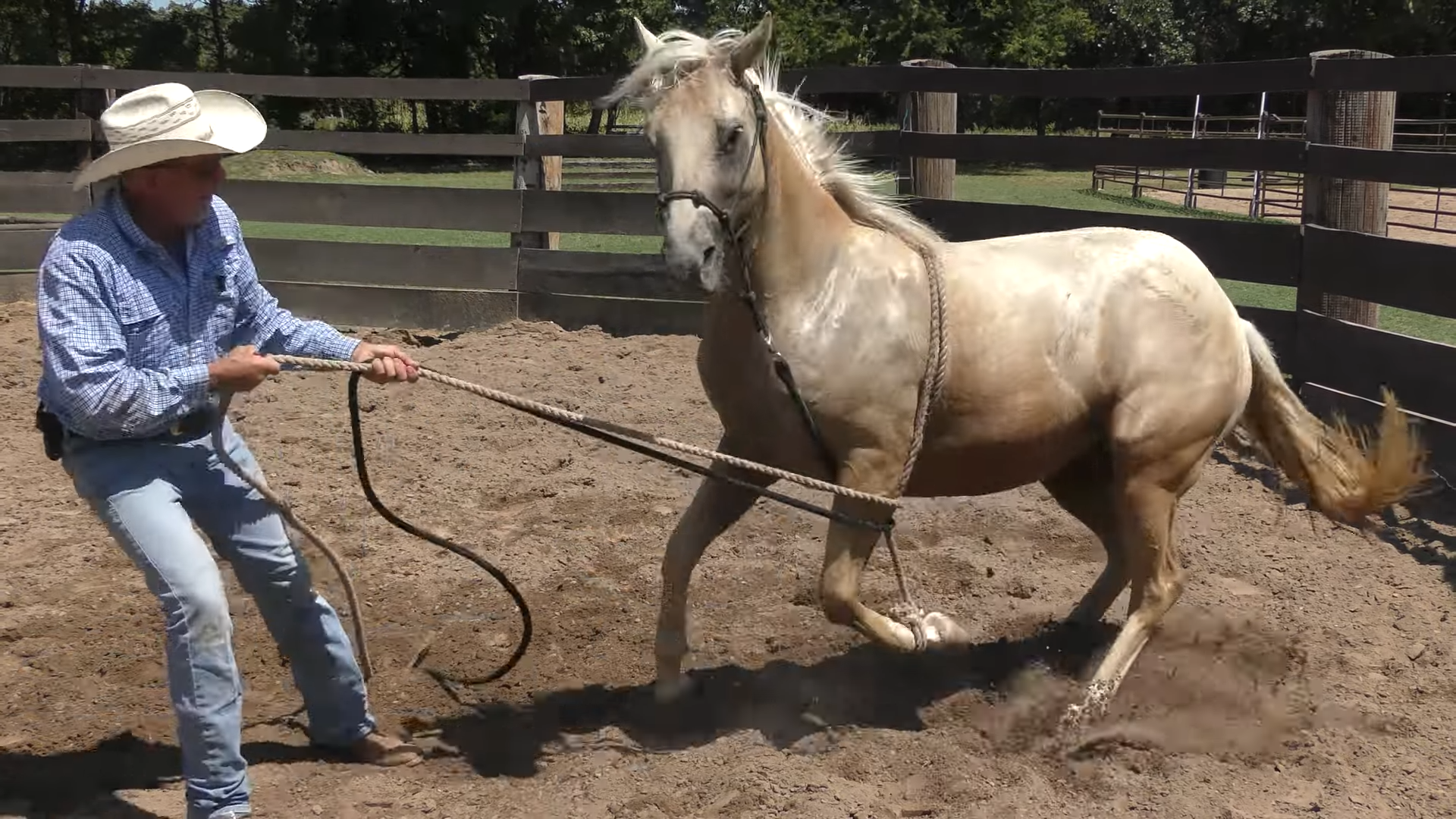Welcome to today’s round pen session, where we’ll be discussing the process of laying a horse down and why it is done. In this demonstration, we’ll be working with Farah, a beautiful three-year-old quarter-horse filly who exhibits some signs of anxiety. While not all horses require this training technique, it can be beneficial for those struggling with fear or anxiety. With about 40 to 50 rides under her belt, we believe laying her down will help build trust and address her anxiety.

So why do we lay a horse down? The goal is to help the horse confront and overcome their fears. Instinctually, horses perceive lying on the ground as a vulnerable position, as it exposes them to potential predators. By laying them down in a controlled environment, we create an opportunity for them to learn trust and face their fears head-on.

To begin, we’ll use a soft cotton rope or lead rope. It’s crucial to ensure that the horse understands pressure and yielding with their feet before attempting this technique. Please note that there is no physical pain involved in this process. Inflicting physical harm on a horse is counterproductive and won’t yield the desired results. However, there may be some emotional stress involved, as we deliberately challenge the horse’s comfort zone.

Taking Farah as an example, we’ll start by lifting her front left foot and securing the rope in a specific manner. This prevents her from putting her foot down, creating a situation where she needs to adapt and respond. It’s important to be cautious during this stage, as each horse’s reaction can vary. Some may hop or rear up, driven by their instincts to find an escape route. Our role is to guide them through this process, ensuring their safety and well-being.

As we progress, we observe Farah’s responses to the training. If she shows signs of understanding and compliance, we may release the pressure and provide her with a moment of respite. This allows her to process the experience and gradually build trust. It’s worth mentioning that horses may exhibit subtle behaviors such as lip licking, indicating their emotional state during these exercises.

It’s crucial to approach laying a horse down with respect and consideration for their well-being. This technique aims to instill trust and alleviate anxiety, ultimately enhancing their overall training experience. Remember, not all horses require this particular exercise, but for those who do, it can be an effective tool in their development.
Stay tuned for more insights and training techniques in our ongoing exploration of horsemanship. Together, let’s create a harmonious bond between horses and their human partners.
